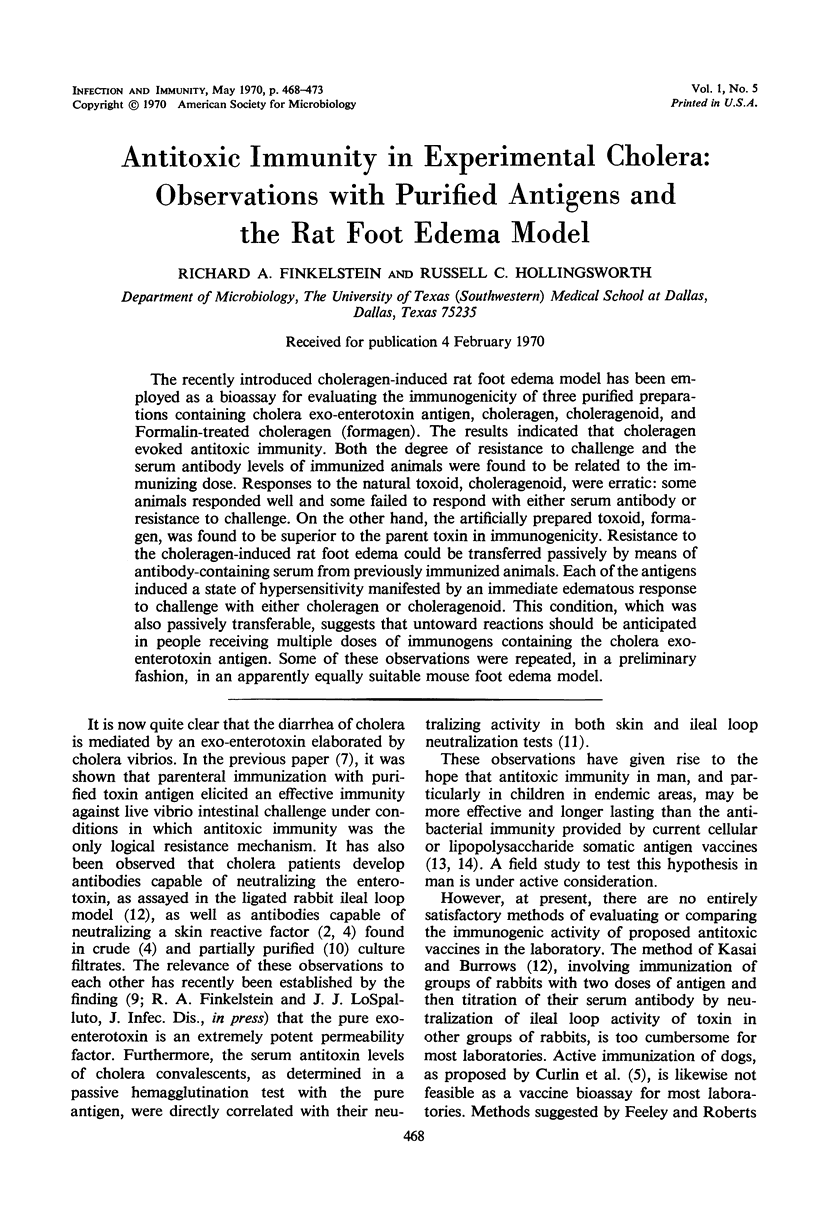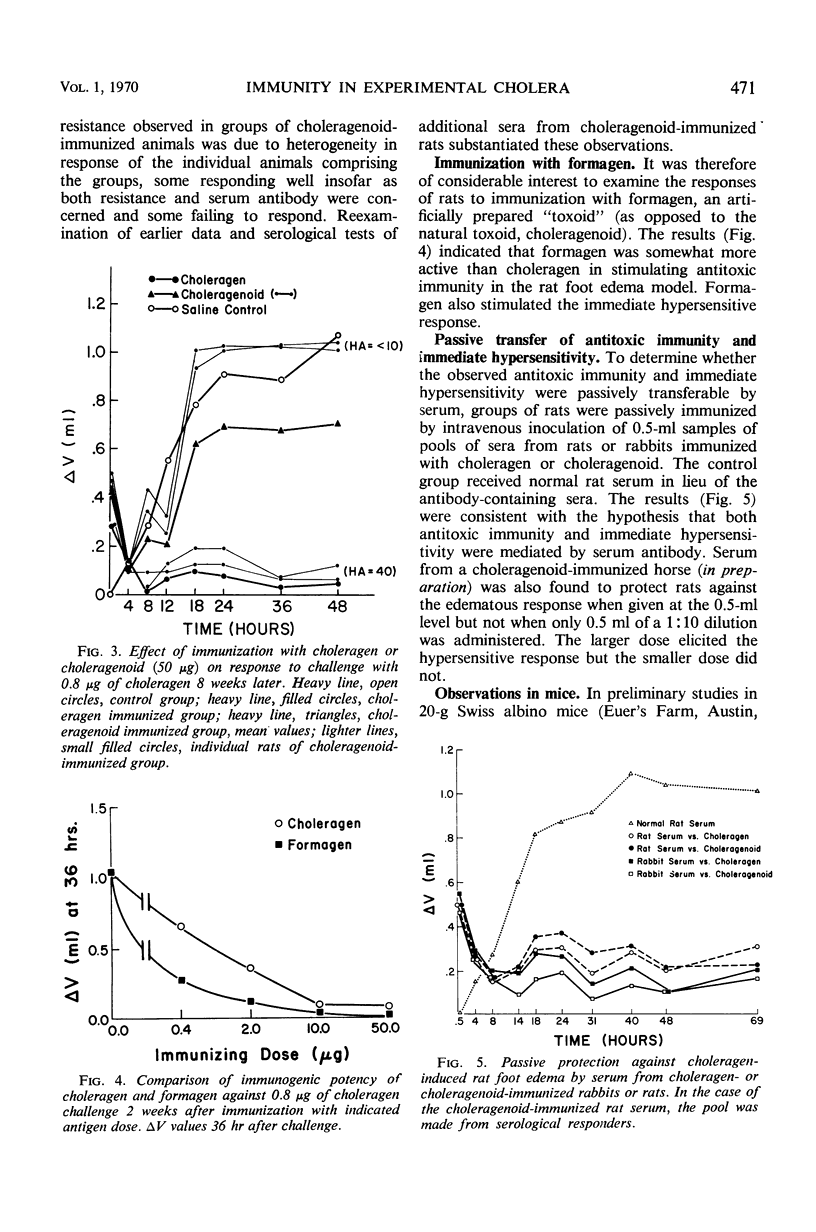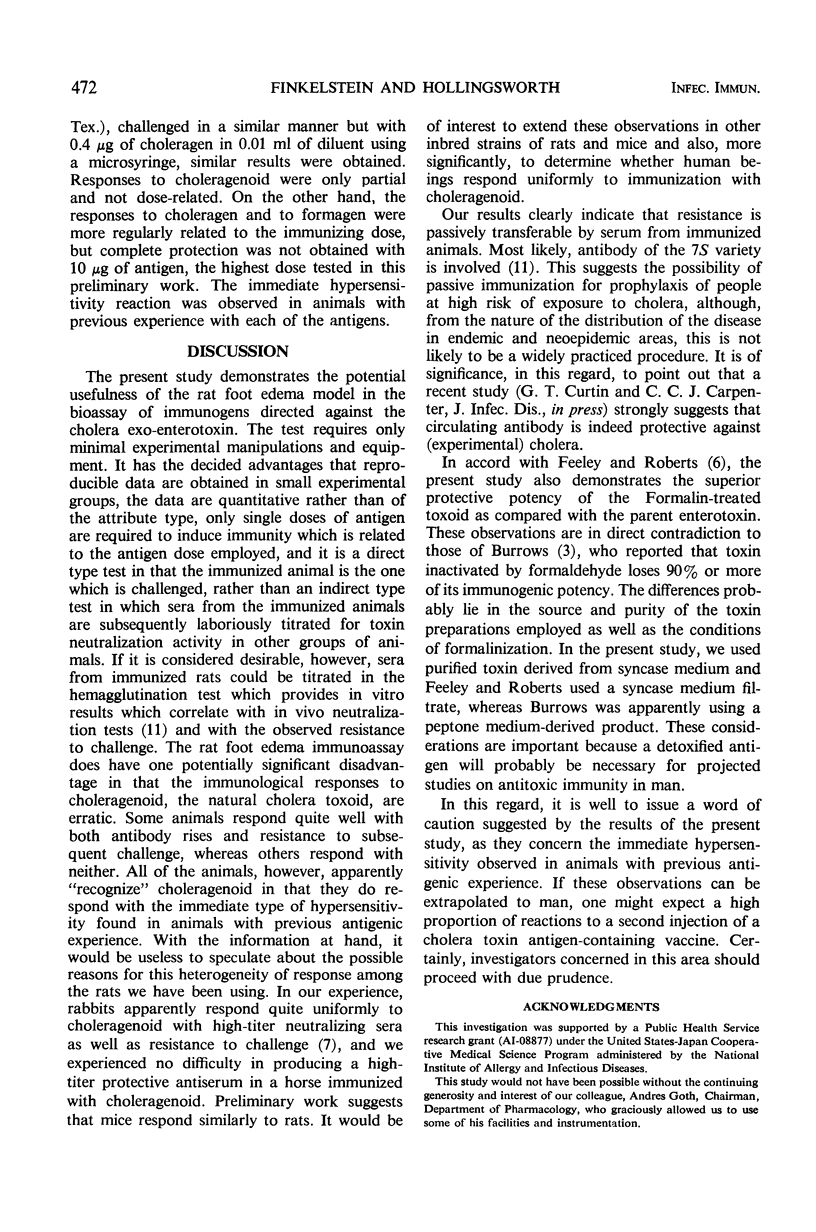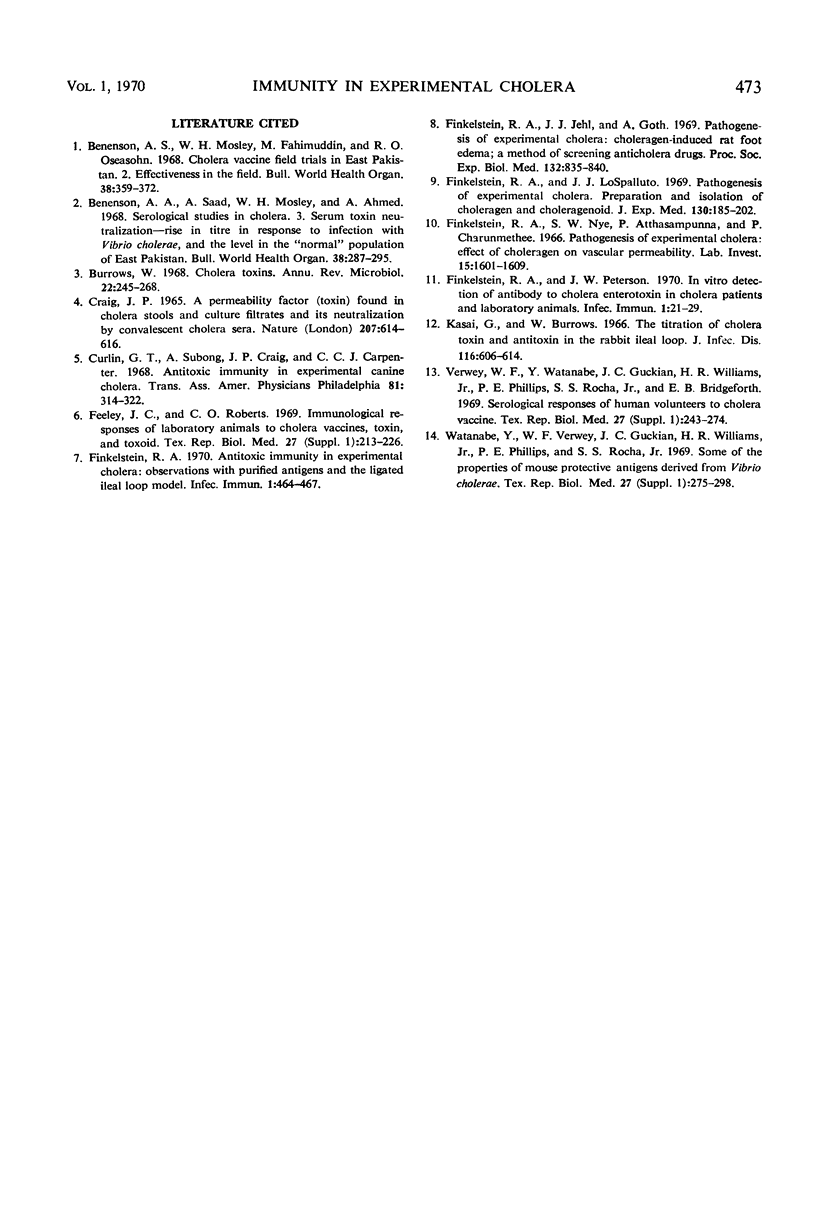Abstract
The recently introduced choleragen-induced rat foot edema model has been employed as a bioassay for evaluating the immunogenicity of three purified preparations containing cholera exo-enterotoxin antigen, choleragen, choleragenoid, and Formalin-treated choleragen (formagen). The results indicated that choleragen evoked antitoxic immunity. Both the degree of resistance to challenge and the serum antibody levels of immunized animals were found to be related to the immunizing dose. Responses to the natural toxoid, choleragenoid, were erratic: some animals responded well and some failed to respond with either serum antibody or resistance to challenge. On the other hand, the artificially prepared toxoid, formagen, was found to be superior to the parent toxin in immunogenicity. Resistance to the choleragen-induced rat foot edema could be transferred passively by means of antibody-containing serum from previously immunized animals. Each of the antigens induced a state of hypersensitivity manifested by an immediate edematous response to challenge with either choleragen or choleragenoid. This condition, which was also passively transferable, suggests that untoward reactions should be anticipated in people receiving multiple doses of immunogens containing the cholera exo-enterotoxin antigen. Some of these observations were repeated, in a preliminary fashion, in an apparently equally suitable mouse foot edema model.
Full text
PDF





Selected References
These references are in PubMed. This may not be the complete list of references from this article.
- Benenson A. S., Mosley W. H., Fahimuddin M., Oseasohn R. O. Cholera vaccine field trials in east Pakistan. 2. Effectiveness in the field. Bull World Health Organ. 1968;38(3):359–372. [PMC free article] [PubMed] [Google Scholar]
- Benenson A. S., Saad A., Mosley W. H., Ahmed A. Serological studies in cholera. 3. Serum toxin neutralization--rise in titre in response to infection with Vibrio cholerae, and the level in the "normal" population of East Pakistan. Bull World Health Organ. 1968;38(2):287–295. [PMC free article] [PubMed] [Google Scholar]
- Burrows W. Cholera toxins. Annu Rev Microbiol. 1968;22:245–268. doi: 10.1146/annurev.mi.22.100168.001333. [DOI] [PubMed] [Google Scholar]
- Craig J. P. A permeability factor (toxin) found in cholera stools and culture filtrates and its neutralization by convalescent cholera sera. Nature. 1965 Aug 7;207(997):614–616. doi: 10.1038/207614a0. [DOI] [PubMed] [Google Scholar]
- Curlin G. T., Subong A., Craig J. P., Carpenter C. C. Antitoxic immunity in experimental canine cholera. Trans Assoc Am Physicians. 1968;81:314–322. [PubMed] [Google Scholar]
- Finkelstein R. A. Antitoxic immunity in experimental cholera: observations with purified antigens and the ligated ileal loop model. Infect Immun. 1970 May;1(5):464–467. doi: 10.1128/iai.1.5.464-467.1970. [DOI] [PMC free article] [PubMed] [Google Scholar]
- Finkelstein R. A., Jehl J. J., Goth A. Pathogenesis of experimental cholera: choleragen-induced rat foot edema; a method of screening anticholera drugs. Proc Soc Exp Biol Med. 1969 Dec;132(3):835–840. doi: 10.3181/00379727-132-34318. [DOI] [PubMed] [Google Scholar]
- Finkelstein R. A., LoSpalluto J. J. Pathogenesis of experimental cholera. Preparation and isolation of choleragen and choleragenoid. J Exp Med. 1969 Jul 1;130(1):185–202. doi: 10.1084/jem.130.1.185. [DOI] [PMC free article] [PubMed] [Google Scholar]
- Finkelstein R. A., Nye S. W., Atthasampunna P., Charunmethee P. Pathogenesis of experimental cholera. Effect of choleragen on vascular permeability. Lab Invest. 1966 Oct;15(10):1601–1609. [PubMed] [Google Scholar]
- Finkelstein R. A., Peterson J. W. In vitro detection of antibody to cholera enterotoxin in cholera patients and laboratory animals. Infect Immun. 1970 Jan;1(1):21–29. doi: 10.1128/iai.1.1.21-29.1970. [DOI] [PMC free article] [PubMed] [Google Scholar]
- Kasai G. J., Burrows W. The titration of cholera toxin and antitoxin in the rabbit ileal loop. J Infect Dis. 1966 Dec;116(5):606–614. doi: 10.1093/infdis/116.5.606. [DOI] [PubMed] [Google Scholar]


